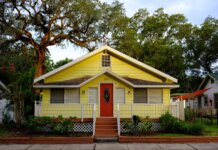CoreLogic’s monthly Loan Performance Insights Report for January shows that, nationally, 3.5% of mortgages were in some stage of delinquency (30 days or more past due, including those in foreclosure) that month, representing a 0.5 percentage-point decline in the overall delinquency rate compared with January 2019, when it was 4%.
This marked 25 consecutive months of annual declines and was the lowest for a January in more than 20 years. However, mounting job losses since the COVID-19 pandemic was declared a national emergency has raised the possibility of many borrowers falling behind on their mortgage payments in coming months.
“Home loan delinquency and foreclosure rates were the lowest in a generation before the COVID-19 pandemic hit,” says Dr. Frank Nothaft, chief economist at CoreLogic. “Recession-induced job losses will fuel delinquencies. However, wide-spread foreclosures across America will likely be averted because of the home equity buffer that homeowners have and the available forbearance programs.”
As of January 2020, the foreclosure inventory rate, which measures the share of mortgages in some stage of the foreclosure process, was 0.4% – unchanged from January 2019. January’s foreclosure inventory rate tied the prior 14 months as the lowest for any month since at least January 1999.
The rate for early-stage delinquencies – defined as 30 to 59 days past due – was 1.7% in January 2020, down from 1.9% in January 2019. The share of mortgages 60 to 89 days past due in January 2020 was 0.6%, down from 0.7% in January 2019. The serious delinquency rate – defined as 90 days or more past due, including loans in foreclosure – was 1.2% in January 2020, down from 1.4% in January 2019. This is the lowest serious delinquency rate experienced since April 2000, when it was 1%.
The share of mortgages that transitioned from current to 30 days past due was 0.6% in January 2020, down from 0.8% in January 2019. By comparison, just before the start of the financial crisis in January 2007, the current-to-30-day transition rate was 1.2%, and peaked at 2% in November 2008.
“After some initial cushioning from equity buffers, lower mortgage interest costs and government support and forbearance programs, we expect delinquency rates to jump significantly throughout the year as the economic toll from COVID-19 becomes more evident,” says Frank Martell, president and CEO of CoreLogic.
“It is likely that areas of the country that have local economies driven by energy, transportation and media and entertainment will lead the way in delinquencies. The ultimate extent of the higher delinquencies will depend on how quickly the broader economy opens up again and employment levels rebound – both of these factors are uncertain at this time.”












